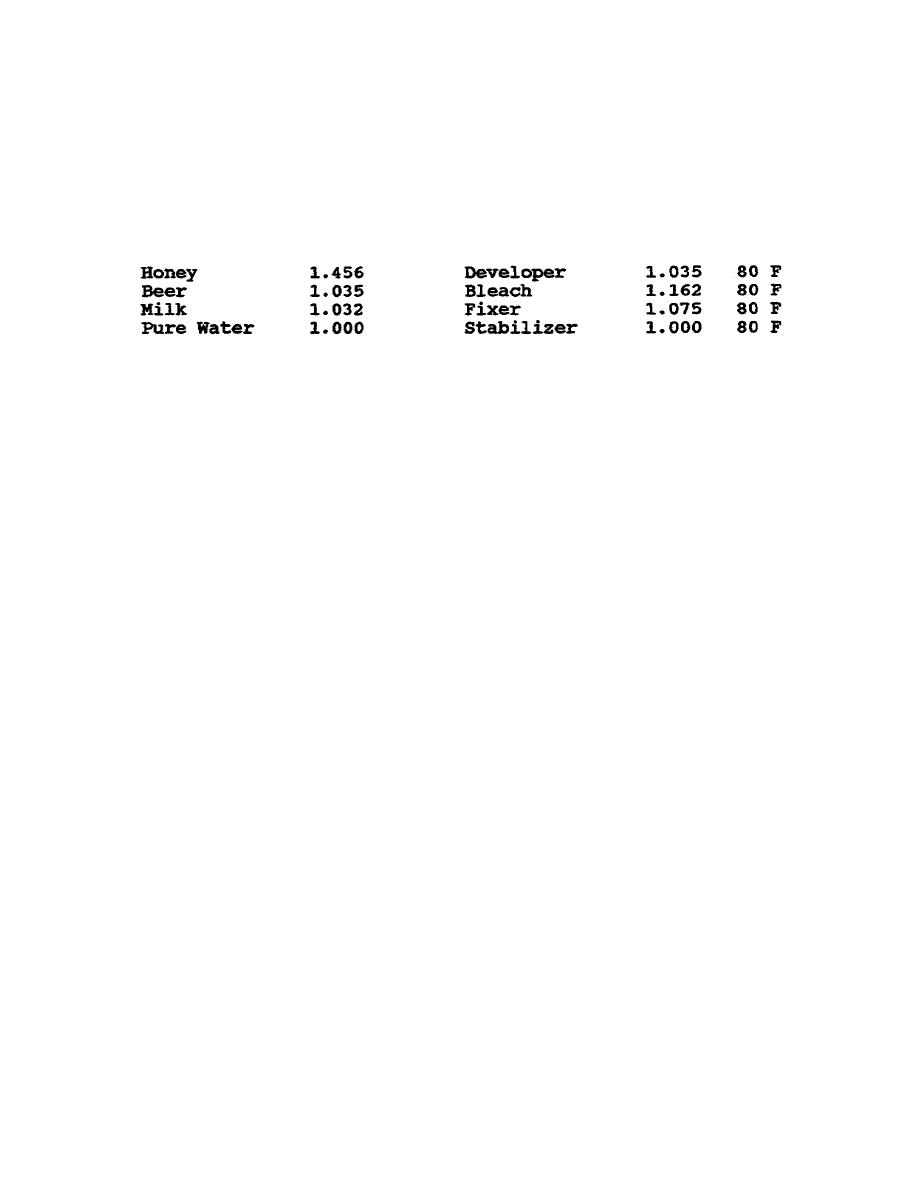
(b) The instrument used to measure specific gravity is a
hydrometer.
The hydrometer is calibrated to read 1.000 in pure distilled
water at 60 degrees F. The solution being tested is measured against this
standard.
(c) Because specific gravity readings of a solution will not be
taken in this course, exact procedures will not be discussed. The following
are examples of specific gravity readings of C-41 color negative developer
and other solutions.
b. Determining pH.
The symbol pH is derived from the French words
"pouvoir hydrogene," or literally, hydrogen power.
It is defined as the
negative logarithm (base 10) of the reciprocal of the hydrogen ion
concentration in gram equivalents per liter of solution.
It is used to
indicate the degree of acidity or alkalinity of a solution by producing a
whole number between 0 and 14 inclusive.
(1) What pH figures mean. Acid solutions will have a pH of less than
7.0 and alkaline solutions will have a pH of greater than 7.0. A pH of 7.0
is the value for pure distilled water and is regarded as being neutral. As
the pH scale is logarithmic, a change in pH of 1.0 indicates a 10x change.
For example, a developer with a pH of 11 would be 10 times as strong (pH
wise) as a developer with a pH of 10.
(a) The pH of a developer indicates its activity or ability to
produce densities. The higher the pH the more active the developer, and the
lower the pH the less active. If you can maintain the developer's pH at a
constant level, the densities and gamma it produces will remain constant.
This assumes that no changes occur in any of the component concentrations.
The prime reason that the developers D-19, DK-50, and D-76 all produce
different gammas or contrast is the fact that their pH is different.
(b) The pH of a developer should be as close as possible to the
standard for consistent results.
Standards for developer pH should be
determined and upper and lower control limits should be established in the
same manner as specific gravity.
2-17
SS0514



 Previous Page
Previous Page
